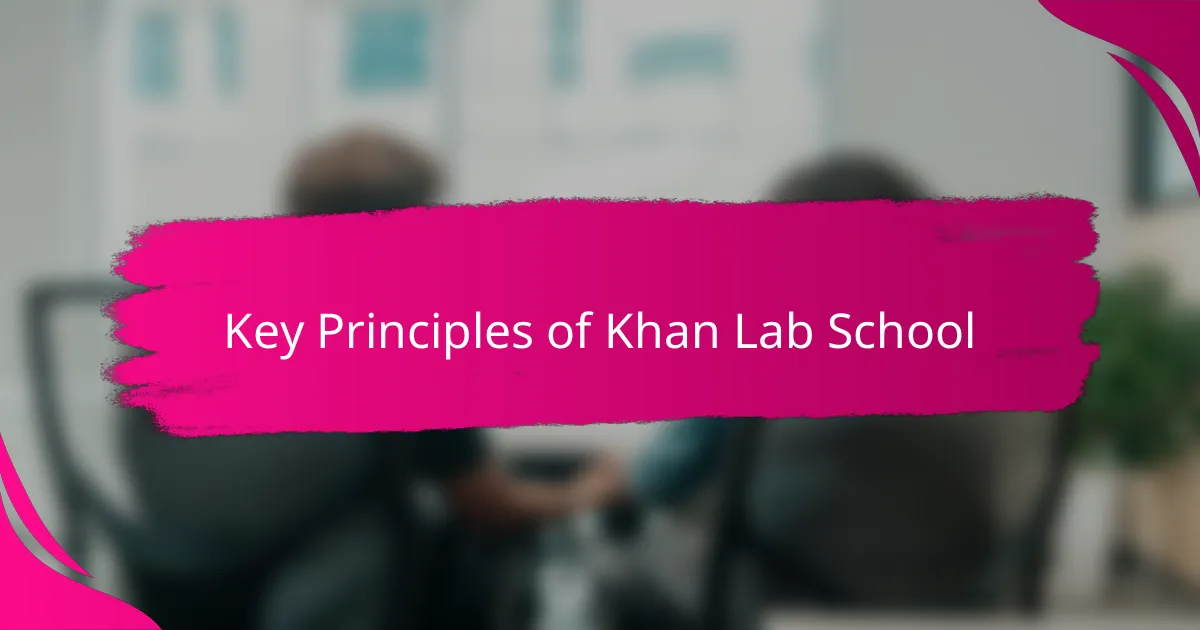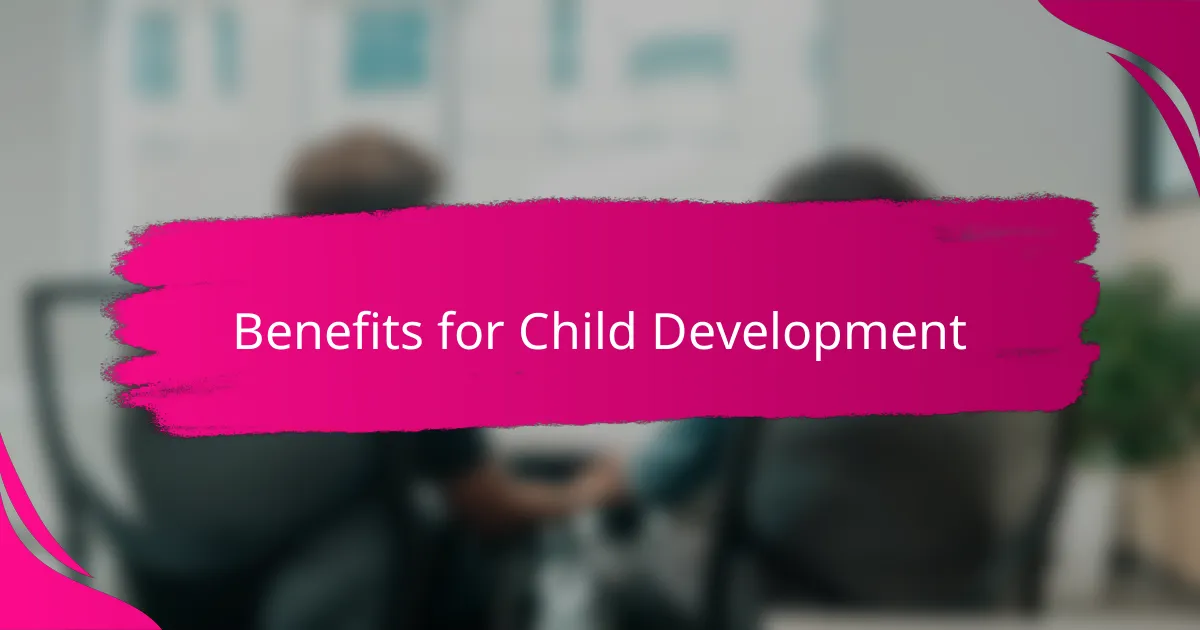Key takeaways
- The Khan Lab School method emphasizes personalized learning, allowing students to progress at their own pace and focus on mastering material rather than merely achieving grades.
- Collaboration and real-world project involvement foster critical thinking and essential social skills in children.
- Creating a flexible and engaging home learning environment enhances autonomy and supports diverse learning activities.
- Continuous feedback and celebrating small victories are crucial for nurturing confidence and maintaining motivation in children.

Understanding Khan Lab School Method
The Khan Lab School method centers on a personalized learning experience where students progress at their own pace. I found this approach refreshing because it acknowledges that every child learns differently rather than forcing them into a standardized mold. Have you ever noticed how frustrating it can be when your child struggles simply because the lesson moves too fast or too slow for them?
What struck me most about this method is its emphasis on mastery rather than grades. Instead of rushing to the next topic, students focus on truly understanding the material, which builds confidence and long-term retention. Watching my own child take ownership of their learning through this shift was both inspiring and reassuring.
Another aspect that really resonated with me is the integration of real-world projects and collaboration within the Khan Lab School model. It’s not just about sitting at a desk and memorizing facts; it’s about applying knowledge in meaningful ways. Doesn’t that kind of learning feel more relevant and engaging to you as a parent? I certainly believe it makes education come alive for kids.

Key Principles of Khan Lab School
One core principle that impressed me is the focus on student autonomy. At Khan Lab School, learners are encouraged to take charge of what and how they learn, which felt like a game-changer for my child’s motivation. Have you seen how much more excited kids become when they get to choose their learning path rather than follow a strict curriculum?
Another key idea is the commitment to community and collaboration. Students regularly work together on projects, sharing ideas and solving problems collectively. From my own experience, this approach not only builds social skills but also creates a support system that makes tackling challenges less intimidating.
Lastly, the principle of continuous feedback stood out to me. Instead of traditional testing, students receive ongoing input that helps them improve step by step. I noticed my child became less anxious about mistakes because feedback was framed as part of the growth process, not just a final judgment. Isn’t that the kind of learning environment every parent hopes for?

Benefits for Child Development
What I found truly remarkable about the Khan Lab School method is how it nurtures a child’s confidence through personalized pacing. When my child wasn’t rushed and could spend time mastering each concept, I saw their pride grow, which I believe is crucial for emotional development.
This approach also encourages critical thinking by involving kids in real-life projects that make learning tangible. I noticed my child started asking deeper questions and connecting ideas in ways that felt natural, not forced — something I hadn’t seen with traditional methods.
Plus, the collaborative environment builds essential social skills. Watching my child thrive in group work, exchanging ideas freely, made me realize how important it is for development beyond academics. After all, isn’t preparing them for the real world about more than just grades?

Preparing Your Home Environment
Creating a dedicated learning space at home was my first step in embracing the Khan Lab School method. I made sure the area was free from distractions, yet inviting enough that my child wanted to spend time there. Have you ever noticed how the right environment can completely change your child’s attitude toward studying? It certainly did for us.
I also arranged materials within easy reach—books, art supplies, and digital devices—so my child could independently choose tools as needed. This small adjustment reinforced the autonomy Khan Lab School emphasizes and boosted my child’s confidence in managing their own learning. It’s amazing how something as simple as accessible resources can empower a young learner, don’t you think?
Finally, I kept the space flexible to accommodate various types of activities—from silent reading to hands-on projects and group discussions. Watching my child move seamlessly from one mode of learning to another made me realize how important it is to have a home setup that supports diverse styles of engagement. Isn’t that the kind of environment we all want for our kids to truly flourish?

Setting Daily Learning Routines
When I first started setting daily learning routines inspired by the Khan Lab School method, I realized just how vital consistency was for my child’s comfort and focus. Having a predictable schedule helped reduce the usual morning chaos and gave my child a clear sense of what to expect each day. Have you ever noticed how kids often feel more at ease when they know the plan ahead?
I decided to block out specific times for subjects that needed deeper focus and mixed in breaks for creativity and play. This balance made the routine feel less like a rigid timetable and more like a natural rhythm tailored to my child’s energy levels. It’s incredible how just chunking the day into manageable pieces can keep motivation high.
One thing I learned quickly was to stay flexible within the routine—if my child was really engrossed in a project, I didn’t rush to switch gears. This adaptability seemed to honor their curiosity and reinforced the idea that learning isn’t just about sticking to a clock but about meaningful engagement. Don’t you think allowing that wiggle room makes learning feel less like a chore?
![]()
Tracking Progress and Adjustments
Tracking progress became a natural part of our daily rhythm once I started using Khan Lab School’s emphasis on mastery. Instead of waiting for formal tests, I noticed small signs—like my child confidently explaining a concept or eagerly tackling a challenge—that told me they truly understood the material. Have you ever caught your child teaching you something? That, for me, was the clearest indicator of progress.
Adjustments were inevitable, and honestly, that felt empowering rather than frustrating. When I saw my child struggling with a topic, we’d pause and revisit it from a different angle or slow down the pace. This fluid approach took the pressure off both of us and kept learning enjoyable. Isn’t it refreshing to drop the “one-size-fits-all” expectation and respond to your child’s real needs instead?
I also found tracking progress in a visual and tangible way helped my child stay motivated. We used simple charts and journals where achievements were noted—not as grades, but as milestones. Watching that collection grow turned learning into a shared celebration, reinforcing the idea that every small step forward counts. Don’t we all need those little victories to keep going?

Tips from Personal Experience
One tip I can’t stress enough is the importance of patience. At first, I wanted to see quick progress, but the Khan Lab School method taught me that true mastery takes time. Have you ever noticed how frustration sneaks in when you push too hard? Slowing down allowed my child to build genuine confidence, and that shift made all the difference.
Another thing that helped me immensely was embracing flexibility. I learned to listen closely to my child’s interests and energy levels rather than sticking rigidly to a plan. When curiosity sparked unexpectedly, I followed it, even if it meant rearranging the schedule. Have you tried letting your child lead sometimes? From my experience, it transforms learning into an adventure rather than a checklist.
Lastly, celebrating small wins became a cornerstone in our learning journey. I made it a habit to acknowledge not just big accomplishments but tiny breakthroughs too, like mastering a tricky problem or asking a thoughtful question. Those moments fueled motivation in ways grades never could. Isn’t it amazing how a little recognition can inspire a child to keep going?
